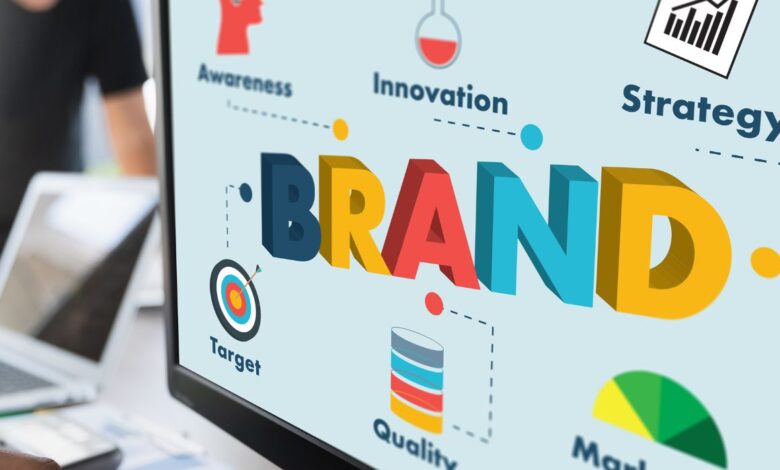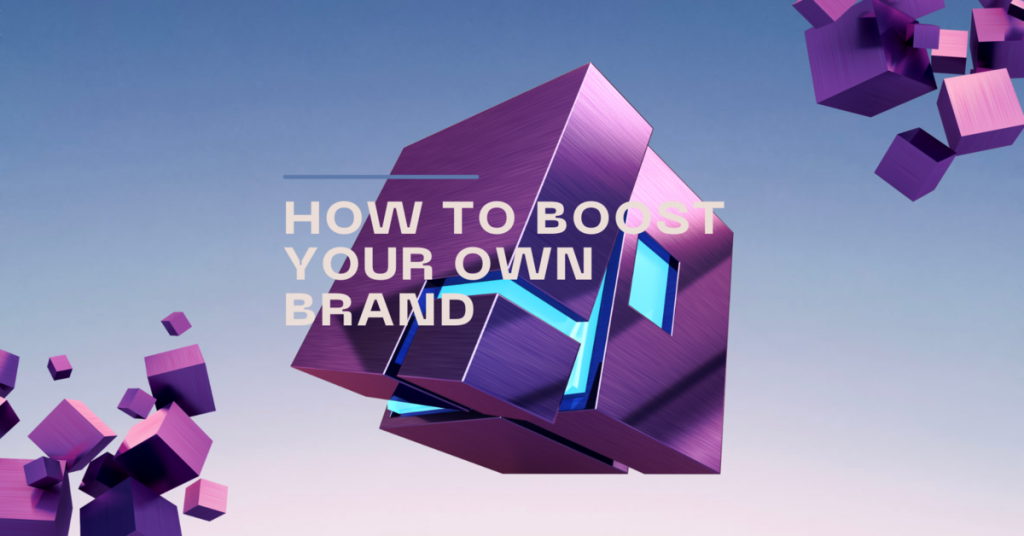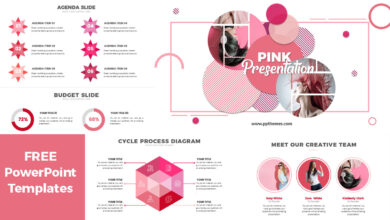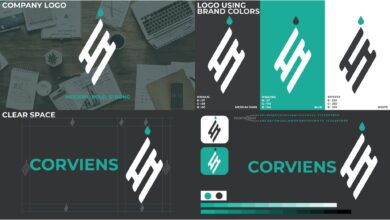
Build a Better Brand Your Guide to Success
Build a better brand – it’s a phrase that echoes in the minds of every entrepreneur and business owner. But what does it truly mean? It’s not just about a logo or a catchy slogan; it’s about crafting a powerful identity that resonates deeply with your audience, fostering trust, and driving sustainable growth. This journey involves understanding your target market, telling a compelling story, and building a strong online presence.
It’s about creating a brand that people not only recognize but also love and actively choose.
We’ll explore the key elements involved in building a brand that stands out from the crowd, from defining your core values and crafting your brand story to leveraging social media and managing your online reputation. Get ready to dive deep into the strategies and techniques that will transform your brand into a powerhouse!
Defining a Better Brand

Source: webflow.com
Building a better brand isn’t about flashy logos or catchy slogans; it’s about creating a genuine connection with your audience. It’s about crafting a consistent experience that resonates deeply and fosters lasting loyalty. This involves understanding what makes a brand truly successful and adapting strategies to fit the ever-evolving digital landscape.
Characteristics of a Successful Brand
A successful brand possesses several key characteristics. It’s more than just a name; it’s a promise. It consistently delivers on that promise, building trust and fostering a strong reputation. This involves a clear and concise brand message, a strong visual identity, and consistent communication across all platforms. Furthermore, a successful brand understands its target audience intimately, tailoring its messaging and offerings to their specific needs and desires.
Finally, it cultivates a strong brand community, encouraging engagement and interaction with its customers. Think of brands like Apple, known for their sleek design and user-friendly technology, or Patagonia, renowned for its commitment to environmental sustainability. These brands exemplify consistency, authenticity, and a deep understanding of their target audience.
Traditional versus Modern Branding Strategies
Traditional branding strategies often focused on mass-market appeal, utilizing large-scale advertising campaigns and broad messaging. Think of the classic television commercials and print ads of the past. Modern branding, however, leverages digital channels and data-driven insights to target specific demographics and personalize the customer experience. Social media, influencer marketing, and targeted advertising campaigns are now commonplace. While traditional methods still hold value, modern approaches offer greater precision and efficiency, allowing brands to connect with their audiences on a more individual level.
For instance, a traditional approach might involve a generic newspaper ad, whereas a modern approach might utilize targeted Facebook ads based on user interests and demographics.
Brand Authenticity and Consumer Trust
Brand authenticity is paramount in today’s marketplace. Consumers are increasingly discerning, prioritizing brands that align with their values and demonstrate genuine commitment to their mission. Authenticity builds trust, fostering loyalty and positive word-of-mouth marketing. In contrast, inauthentic brands risk alienating consumers and damaging their reputation. For example, a company claiming to be environmentally conscious but engaging in unsustainable practices will quickly lose credibility.
Transparency and open communication are key to fostering authenticity and building consumer trust.
Brand Identity Framework for “EcoFlow”
Let’s design a brand identity framework for a fictional company, “EcoFlow,” a sustainable energy solutions provider.
Core Values:
- Sustainability: Prioritizing environmentally friendly practices and solutions.
- Innovation: Continuously developing cutting-edge, efficient energy technologies.
- Accessibility: Making sustainable energy accessible and affordable to a wider audience.
- Community: Fostering a community of environmentally conscious individuals and businesses.
Mission Statement:
To empower individuals and communities to transition to a cleaner, more sustainable energy future through innovative and accessible solutions.
Target Audience:
EcoFlow targets environmentally conscious homeowners, businesses, and communities seeking reliable and sustainable energy alternatives. This includes individuals interested in reducing their carbon footprint, businesses committed to corporate social responsibility, and communities aiming to achieve energy independence. The marketing will emphasize the long-term cost savings and environmental benefits of switching to EcoFlow’s products.
Understanding Your Target Audience
Building a successful brand isn’t about creating something you like; it’s about creating something your ideal customer needs and desires. Understanding your target audience is the cornerstone of any effective branding strategy. Without this crucial knowledge, your marketing efforts will likely fall flat, wasting valuable resources and hindering growth. This section will delve into the process of identifying, profiling, and understanding your ideal customers.
Identifying your target audience involves more than just basic demographics. While age, gender, location, and income are important factors, understanding their psychographics – their values, attitudes, lifestyles, and interests – is equally crucial. This deeper understanding allows you to tailor your brand messaging and marketing strategies for maximum impact. It’s about creating a connection, not just making a sale.
Defining Key Demographics and Psychographics
To effectively define your target audience, you need to go beyond surface-level characteristics. For example, instead of simply stating “women aged 25-35,” consider their lifestyle, career aspirations, and spending habits. Are they career-driven professionals? Stay-at-home mothers? Entrepreneurs?
Understanding these nuances allows for more targeted and resonant messaging. Similarly, consider their values. Are they environmentally conscious? Do they prioritize ethical sourcing? These psychographic details inform your brand’s personality and values proposition.
Creating Detailed Buyer Personas
Buyer personas are fictional representations of your ideal customers. They’re not real people, but rather composite profiles based on your market research. Creating multiple personas allows you to cater to different segments within your target audience. Each persona should include details like their name, age, occupation, income, family status, hobbies, pain points, and aspirations. For example, you might have a “Busy Professional” persona and a “Budget-Conscious Parent” persona, each requiring different marketing approaches.
Effective Market Research Strategies
Effective market research is crucial for building accurate buyer personas. Several strategies can be employed, including surveys, focus groups, interviews, and analyzing existing data. Surveys can gather quantitative data on demographics and preferences, while focus groups provide qualitative insights into consumer behavior and attitudes. Interviews allow for in-depth exploration of individual experiences, and analyzing existing data (like website analytics or social media engagement) reveals valuable patterns and trends.
Remember to utilize a combination of methods for a comprehensive understanding.
Building a better brand takes a multi-pronged approach, and video marketing is key. One fantastic way to boost your brand visibility and connect with your audience is through YouTube; check out this guide on getting it on with YouTube for some seriously helpful tips. Ultimately, consistent, high-quality content, like what you can learn to create through YouTube, is what truly builds a memorable and successful brand.
Example Buyer Personas
The following table showcases example buyer personas. Remember to replace this example data with your own research findings.
| Persona Name | Age | Occupation | Key Characteristics |
|---|---|---|---|
| Sarah Miller | 32 | Marketing Manager | Career-driven, tech-savvy, values convenience and efficiency, environmentally conscious, active on social media. |
| David Lee | 45 | Small Business Owner | Family-oriented, budget-conscious, values quality and durability, prefers personalized service, relies on word-of-mouth recommendations. |
| Maria Garcia | 28 | Freelancer | Creative, independent, values flexibility and work-life balance, tech-savvy, interested in unique and sustainable products. |
| John Smith | 60 | Retired | Values comfort and reliability, enjoys leisure activities, prefers traditional marketing channels, appreciates personalized attention. |
Crafting a Compelling Brand Story

Source: artmeet.my
Your brand isn’t just a logo or a product; it’s a narrative. A compelling brand story connects with your audience on an emotional level, fostering loyalty and driving sales. It’s about more than just features and benefits; it’s about weaving a tale that resonates with your target market’s values and aspirations. This narrative should encapsulate your brand’s journey, its core mission, and what sets it apart from the competition.A well-crafted brand story provides context, builds trust, and creates a memorable experience for your customers.
It explainswhy* your brand exists, beyond the simple “what” of your product or service. This “why” is crucial for establishing a strong emotional connection, which ultimately leads to brand advocacy and lasting customer relationships. Think of it as the human element that breathes life into your brand identity.
Successful Brand Storytelling Techniques
Several prominent companies have mastered the art of brand storytelling. Nike’s “Just Do It” campaign isn’t just a slogan; it’s a narrative about overcoming challenges and achieving personal greatness. It taps into the aspirational desires of its target audience, inspiring them to push their limits. Similarly, Dove’s “Real Beauty” campaign challenged conventional beauty standards, resonating with a vast audience by promoting self-acceptance and body positivity.
These campaigns aren’t just about selling products; they’re about building a community around shared values. Another example is Patagonia, which builds its brand story around environmental sustainability, attracting customers who share its commitment to protecting the planet. Their commitment to ethical sourcing and environmental activism is integral to their brand narrative, attracting a loyal customer base who appreciate their values.
The Importance of Emotional Connection
Emotional connection is the cornerstone of successful brand storytelling. A story that evokes feelings – whether it’s joy, nostalgia, inspiration, or even empathy – creates a deeper and more lasting impact than one that simply presents facts and figures. When a brand connects with a customer emotionally, it fosters a sense of loyalty and trust that goes beyond a simple transaction.
This emotional resonance translates into increased brand recall, stronger customer relationships, and ultimately, greater business success. Consider the power of a heartwarming story about a company’s humble beginnings or its commitment to a social cause; these narratives resonate deeply with consumers, forging a stronger bond than any purely transactional approach.
A Hypothetical Brand Story: “Everbloom”
Everbloom is a sustainable skincare line created by a botanist, Dr. Elara Vance, who dedicated her life to researching rare plant extracts with proven rejuvenating properties. Frustrated by the harsh chemicals in conventional skincare, Dr. Vance used her expertise to develop a range of products that are both effective and environmentally friendly. Everbloom’s story is one of passion, innovation, and a deep respect for nature.
Each product is meticulously crafted using sustainably sourced ingredients, reflecting the brand’s commitment to both customer well-being and environmental responsibility. The customer experience focuses on providing personalized consultations, empowering individuals to understand their skin’s unique needs and discover the perfect Everbloom routine. This personalized approach, coupled with the brand’s commitment to sustainability, creates a loyal community of customers who appreciate the quality, effectiveness, and ethical values of the Everbloom brand.
The Everbloom story isn’t just about skincare; it’s about self-care, sustainability, and a commitment to a healthier planet.
Building Brand Visibility and Awareness
Building a strong brand isn’t just about creating a great logo and a catchy slogan; it’s about getting your brand seen and heard by the right people. Visibility and awareness are the cornerstones of a successful brand, driving engagement, loyalty, and ultimately, sales. This involves a multi-faceted approach leveraging various marketing channels, each playing a crucial role in reaching your target audience effectively.Effective brand visibility requires a strategic blend of social media marketing, content creation, and public relations.
Each strategy contributes uniquely to building brand authority and increasing overall reach. Understanding how these elements work together is key to achieving consistent growth and market penetration.
Social Media Marketing and Engagement Strategies
Social media platforms offer unparalleled opportunities for direct engagement with your target audience. Successful strategies go beyond simply posting updates; they involve creating compelling content, fostering community, and actively responding to user interactions. This includes understanding the nuances of each platform – what type of content resonates best on Instagram versus LinkedIn, for example. A robust social media presence necessitates a content calendar, consistent posting schedule, and active monitoring of analytics to optimize performance.
Utilizing paid advertising on platforms like Facebook and Instagram can significantly boost reach and targeting capabilities, allowing you to focus on specific demographics and interests. Furthermore, running contests and giveaways can generate excitement and expand your follower base. Analyzing engagement metrics, such as likes, shares, comments, and click-through rates, allows for continuous refinement of your strategy to maximize impact.
Content Marketing for Brand Authority and Credibility
Content marketing is about providing valuable, relevant, and consistent content to attract and retain a clearly defined audience — and, ultimately, to drive profitable customer action. It’s more than just promotional material; it’s about establishing your brand as a thought leader in your industry. This involves creating various types of content, including blog posts, infographics, videos, podcasts, and ebooks, all designed to educate, inform, and entertain your target audience.
Consistent, high-quality content positions your brand as a reliable source of information, building trust and credibility. For example, a company producing organic skincare could create blog posts on the benefits of natural ingredients, share videos demonstrating their production process, or offer free ebooks on skincare routines. This demonstrates expertise and fosters a stronger connection with consumers.
Public Relations and Media Outreach for Brand Visibility
Public relations (PR) focuses on building and maintaining a positive public image for your brand. Media outreach is a key component of PR, involving actively seeking opportunities to secure media coverage in relevant publications, both online and offline. This could include press releases announcing new products or initiatives, pitching stories to journalists, or participating in interviews. Positive media coverage significantly boosts brand visibility and credibility, reaching a wider audience than your own marketing efforts might achieve independently.
A well-crafted press release, for instance, can secure coverage in industry publications, potentially reaching thousands or even millions of potential customers. Building relationships with key journalists and influencers in your industry is crucial for successful media outreach.
Marketing Channels: Pros and Cons
| Marketing Channel | Pros | Cons | Best For |
|---|---|---|---|
| Social Media Marketing | High engagement potential, direct audience interaction, relatively low cost (organic), targeted advertising options. | Time-consuming, algorithm changes can impact reach, requires consistent effort, can be overwhelming to manage multiple platforms. | Building community, increasing brand awareness, driving traffic to website. |
| Content Marketing | Builds brand authority, attracts organic traffic, establishes thought leadership, fosters long-term engagement. | Requires consistent content creation, can take time to see results, requires optimization. | Educating audience, establishing expertise, generating leads. |
| Public Relations | High credibility, broad reach, builds trust, positive media coverage enhances reputation. | Can be expensive, requires strong media relationships, difficult to control messaging, success is not guaranteed. | Improving brand image, crisis management, reaching a wider audience. |
| Email Marketing | Direct communication, high ROI potential, allows for targeted segmentation, cost-effective. | Requires building an email list, high unsubscribe rates possible, can be perceived as spam if not managed properly. | Nurturing leads, promoting sales, announcing updates. |
Managing Brand Reputation and Customer Experience: Build A Better Brand
Building a better brand isn’t just about crafting a compelling story; it’s about consistently delivering exceptional experiences that foster trust and loyalty. Managing your brand’s reputation and nurturing positive customer experiences are intertwined and crucial for long-term success. A single negative experience can quickly unravel months of hard work, while a positive one can generate significant word-of-mouth marketing.
Monitoring Brand Mentions and Managing Online Reputation
Effective brand reputation management begins with proactive monitoring. This involves actively tracking what’s being said about your brand across various online platforms. This includes social media (Twitter, Facebook, Instagram, etc.), review sites (Yelp, Google My Business, TripAdvisor), forums, and blogs. Tools like Brand24, Mention, or Google Alerts can help automate this process, providing real-time alerts whenever your brand is mentioned.
By identifying both positive and negative mentions, you can swiftly address any issues before they escalate. Responding to negative feedback promptly and professionally demonstrates your commitment to customer satisfaction and can often turn a negative experience into a positive one. For example, a quick, empathetic response to a negative review on Yelp, acknowledging the customer’s concerns and offering a solution, can significantly mitigate the damage and even showcase your brand’s responsiveness.
Handling Customer Feedback and Resolving Complaints
Customer feedback, both positive and negative, is invaluable. Positive feedback reinforces what you’re doing well, while negative feedback highlights areas needing improvement. Establishing clear channels for customers to provide feedback—such as online forms, email, phone, and social media—is essential. When addressing complaints, empathy and a sincere desire to resolve the issue are paramount. Avoid defensive responses; instead, listen carefully to the customer’s concerns, validate their feelings, and offer a concrete solution.
For instance, if a customer received a damaged product, offering a replacement or refund promptly, along with a sincere apology, can transform a negative experience into a positive one, potentially turning a dissatisfied customer into a loyal advocate. Transparency and accountability are key; even if you can’t immediately solve the problem, acknowledging the issue and providing a timeline for resolution will go a long way.
Providing Exceptional Customer Service and Building Customer Loyalty
Exceptional customer service is the cornerstone of building a strong brand reputation and fostering customer loyalty. It’s about exceeding customer expectations at every touchpoint. This involves providing prompt, helpful, and personalized service. Proactive communication, such as follow-up emails after a purchase or personalized recommendations, can significantly enhance the customer experience. Loyalty programs, exclusive offers for repeat customers, and personalized birthday messages can further strengthen customer relationships and encourage repeat business.
Consider Zappos, known for its exceptional customer service, which often goes above and beyond to resolve issues and create positive customer experiences, leading to high customer loyalty and advocacy.
Customer Service Protocol
A well-defined customer service protocol ensures consistent and high-quality service across all channels. This protocol should Artikel procedures for handling various customer interactions, including inquiries, complaints, and returns. It should specify response times, escalation procedures for complex issues, and communication guidelines to ensure consistent messaging and tone.
| Interaction Type | Procedure | Response Time |
|---|---|---|
| Inquiry | Acknowledge receipt within 24 hours; provide a response within 48 hours. | 48 hours |
| Complaint | Acknowledge receipt immediately; investigate the issue; provide a resolution or update within 72 hours. | 72 hours |
| Return | Provide clear instructions on the return process; process the return within 5 business days of receipt. | 5 business days |
Measuring Brand Performance and Growth
Building a better brand isn’t just about creating a great product or service; it’s about understanding how well your brand resonates with your audience and how it performs in the market. Measuring brand performance allows you to identify what’s working, what needs improvement, and ultimately, to guide your brand strategy for sustainable growth. This involves tracking key metrics and analyzing the data to make informed decisions.Key Performance Indicators (KPIs) are crucial for evaluating brand success.
They provide quantifiable measures of your brand’s health and progress toward its goals. By carefully selecting and monitoring the right KPIs, you can gain a clear picture of your brand’s performance and identify areas for improvement.
Key Performance Indicators for Brand Success
Choosing the right KPIs depends on your specific brand goals and industry. However, some common and universally applicable KPIs include brand awareness, website traffic, social media engagement, customer satisfaction (CSAT), Net Promoter Score (NPS), and return on investment (ROI) for marketing campaigns. For example, a high NPS indicates strong customer loyalty, while increased website traffic suggests successful marketing efforts.
Tracking ROI helps determine the effectiveness of marketing spend. These metrics, when considered together, provide a holistic view of brand health.
Tracking Brand Awareness, Engagement, and Customer Satisfaction
Tracking brand awareness involves measuring how familiar your target audience is with your brand. This can be achieved through surveys, social listening tools that monitor brand mentions, and analyzing website analytics to see how many people are visiting your site organically. Engagement metrics, such as likes, shares, comments, and retweets on social media, indicate how actively your audience interacts with your brand content.
Customer satisfaction (CSAT) can be measured through post-purchase surveys, feedback forms, and reviews, providing insights into customer experiences. Regularly monitoring these metrics offers valuable feedback for brand improvements.
Analyzing Data and Making Data-Driven Decisions
Data analysis is the key to unlocking the insights hidden within your brand performance metrics. This involves using tools and techniques to identify trends, patterns, and correlations within your data. For example, a drop in social media engagement might indicate a need to adjust your content strategy, while declining CSAT scores might suggest issues with customer service. By analyzing the data, you can pinpoint areas needing improvement and make informed decisions to enhance brand performance.
This could involve adjusting marketing campaigns, improving customer service, or refining your brand messaging. Data-driven decisions minimize guesswork and maximize the effectiveness of your brand-building efforts.
Sample Brand Performance Dashboard, Build a better brand
Imagine a dashboard divided into four key sections:
Section 1: Brand Awareness: This section displays metrics like website traffic (organic and paid), social media reach (total followers and impressions), and brand mentions across various platforms. A visual representation, perhaps a line graph, showing the trend of these metrics over time would be included. This section would provide a clear picture of how well your brand is reaching its target audience.
Section 2: Customer Engagement: This section showcases engagement metrics such as social media likes, shares, comments, and click-through rates on email campaigns. A bar chart comparing engagement across different platforms would offer valuable insights. This would help identify which channels are most effective for interacting with customers.
Section 3: Customer Satisfaction: This area would display the CSAT score, NPS score, and the number of positive and negative reviews received. A gauge showing the current CSAT and NPS scores, along with trends over time, would be a helpful visual. This section highlights the overall customer sentiment towards the brand.
Section 4: Marketing ROI: This section presents the return on investment for different marketing campaigns, showing the cost of each campaign against the revenue generated. A table summarizing the ROI for each campaign, clearly illustrating the profitability of each marketing initiative, would be presented. This section allows for a clear understanding of the effectiveness of marketing spending.
This dashboard would provide a comprehensive overview of brand performance, allowing for quick identification of strengths and weaknesses, facilitating data-driven decision-making, and ultimately contributing to brand growth.
Adapting and Evolving Your Brand
In today’s rapidly changing marketplace, a static brand is a dying brand. Consumers’ tastes, technological advancements, and economic shifts all contribute to a dynamic environment where brands must constantly adapt to remain relevant and competitive. Failure to evolve can lead to declining market share, decreased customer loyalty, and ultimately, irrelevance. This section explores the critical importance of brand adaptation and provides a framework for successfully navigating this ongoing process.Staying current requires a proactive approach, not a reactive one.
Understanding market trends and consumer preferences is paramount. This involves continuous monitoring of social media, industry publications, competitor activities, and economic indicators. By analyzing this data, brands can identify emerging trends and anticipate shifts in consumer behavior before they significantly impact their market position. Adapting your brand messaging and strategies to changing market conditions involves a careful balance between preserving your brand’s core identity and embracing new opportunities.
Brand Messaging Adaptation Strategies
Adapting your brand messaging requires a nuanced approach. It’s not about completely reinventing your brand but rather refining your communication to resonate with evolving consumer preferences. This might involve updating your brand’s voice to be more inclusive, adopting a more sustainable message, or tailoring your communication to specific online platforms. For example, a clothing brand might shift from focusing solely on fashion trends to emphasizing sustainability and ethical sourcing, aligning with growing consumer demand for eco-friendly products.
This requires a thorough review of your current messaging, identifying outdated or irrelevant aspects, and crafting new narratives that reflect the current market landscape and consumer values.
Visual Brand Evolution
Visual elements are a crucial aspect of brand identity. Changes in consumer aesthetics and design trends necessitate regular reviews and updates to your visual brand assets. This could involve updating your logo, color palette, typography, or overall brand aesthetic to reflect contemporary design trends and maintain a fresh, modern image. Consider how Coca-Cola has subtly updated its logo and branding over the years, maintaining its core identity while adapting to changing design sensibilities.
Their consistent evolution ensures they remain visually appealing and contemporary, even after decades.
Successful Brand Adaptation Examples
Many successful brands have demonstrated the power of adaptation. Netflix, initially a DVD rental service, successfully transitioned to a streaming giant by recognizing the shift towards digital media consumption. Similarly, Lego, a classic toy brand, has adapted by incorporating digital play experiences and partnering with popular franchises to appeal to new generations. These examples highlight the importance of proactive adaptation and the ability to identify and capitalize on emerging opportunities.
Adapting to a New Market Segment: A Strategic Plan
Expanding into a new market segment requires a comprehensive strategy encompassing messaging, visuals, and distribution. Let’s consider a hypothetical example: a coffee company currently focused on the young adult market wants to expand into the senior market.
- Market Research: Thorough research of the senior market’s coffee preferences, consumption habits, and media consumption patterns is crucial. This includes understanding their preferred coffee types, brewing methods, and price points.
- Messaging Adaptation: The brand’s messaging should shift from focusing on trendy coffee creations and social media engagement to emphasizing comfort, quality, and health benefits, perhaps highlighting low-acid options or highlighting the social aspect of coffee.
- Visual Adjustments: The visual identity might need a subtle shift. Images showcasing vibrant, youthful energy might be replaced with images depicting a relaxed, comfortable atmosphere suitable for older consumers. The website design and packaging could also be adjusted to enhance readability and ease of use for older individuals.
- Distribution Strategy: Distribution channels should be adapted to reach the senior market. This might involve partnerships with senior centers, retirement communities, or focusing on grocery stores frequented by older consumers. Online marketing might focus on channels and platforms preferred by older demographics.
Successfully navigating the complexities of a new market requires careful planning, market research, and a willingness to adapt to the unique characteristics and preferences of the target segment. Ignoring these steps can lead to brand confusion and lack of market penetration.
Concluding Remarks

Source: bzingamarketing.com
Building a better brand isn’t a one-time project; it’s an ongoing process of refinement and adaptation. By consistently evaluating your performance, listening to your customers, and staying ahead of market trends, you can ensure your brand remains relevant, resonant, and successful. Remember, a strong brand is more than just a marketing tool; it’s the heart and soul of your business, representing your values, your promise, and your commitment to your customers.
So, embrace the journey, stay adaptable, and watch your brand flourish!
FAQ Section
What’s the difference between branding and marketing?
Branding is about creating a distinct identity and perception of your company, while marketing is about promoting your brand and products to reach your target audience.
How long does it take to build a strong brand?
Building a strong brand is an ongoing process, not a quick fix. It takes consistent effort and dedication over time.
How can I measure my brand’s success?
Track key performance indicators (KPIs) like brand awareness, customer satisfaction, and website traffic to gauge your brand’s success.
What’s the role of a brand voice?
Your brand voice is the personality and tone you use in all your communications. It should be consistent and reflect your brand values.





